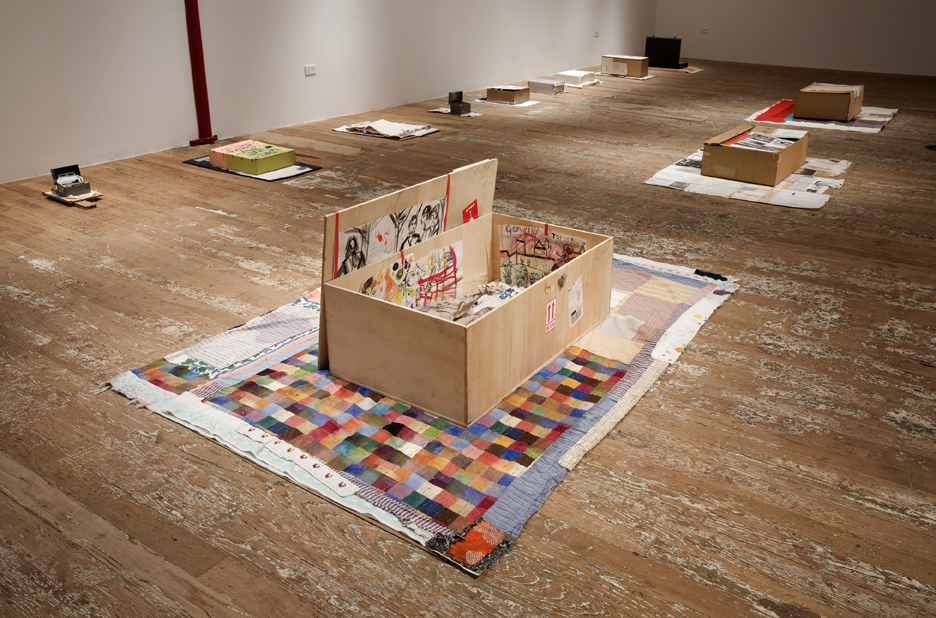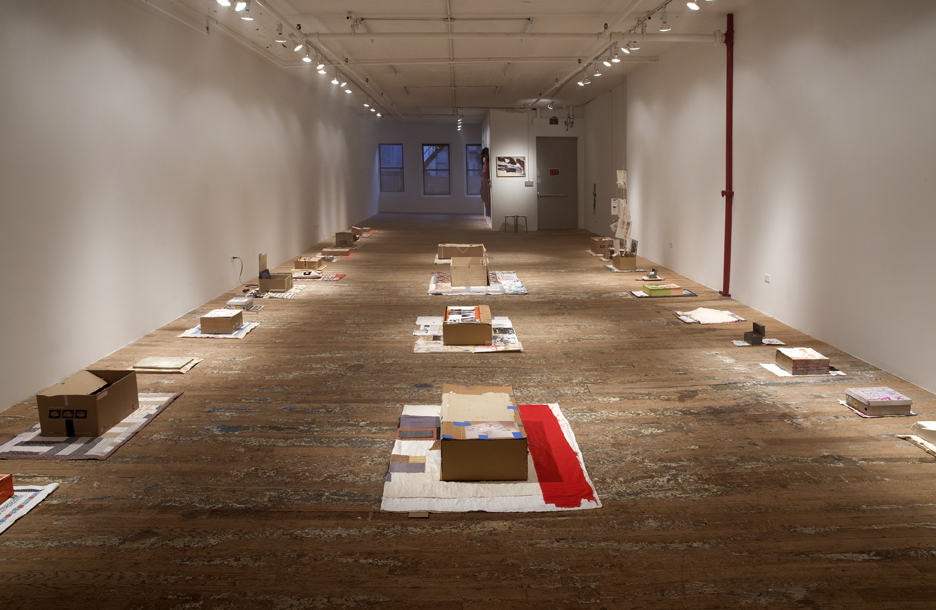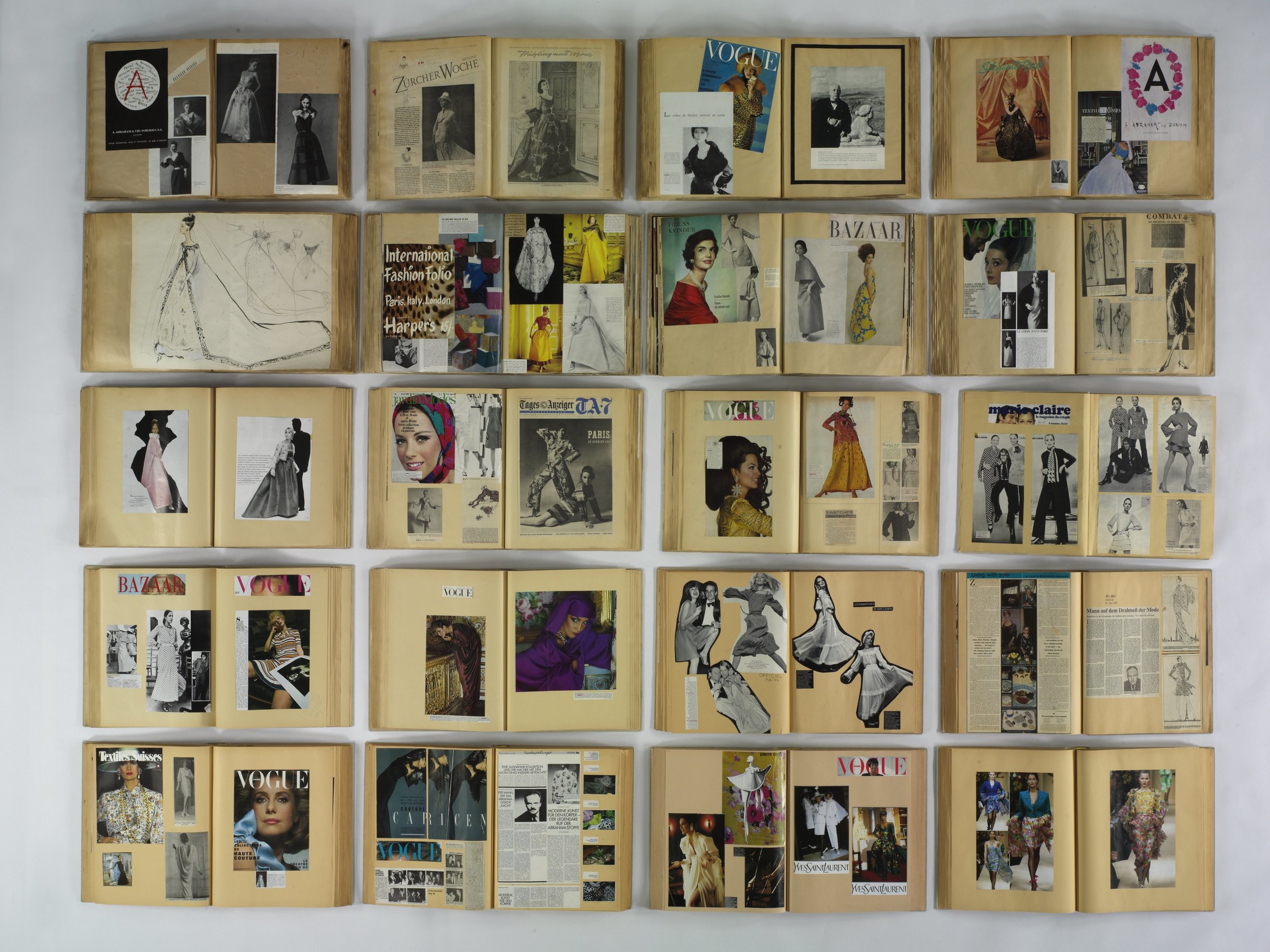A Review of ‘Mode In Flux’ at Roca London Gallery
/by Alessandro Esculapio
Left to right: THEUNSEEN, ‘THEUNSEEN Swarowski’ (2014); Cheng Peng, ‘Normal-In-Normal’ (2015); Michino Koshino, ‘Inflatable Jacket’ (2015); Nikelab x Sacai, ‘Tech Fleece Dress’ (SS 2015).
Fashion is known for always being in flux, but the expression is commonly used to describe the fleeting nature of trends. By contrast, the exhibition ‘Mode In Flux’, curated by White Line Projects studio and on view at Roca London Gallery until the 27th of August, focusses on ‘notions of adaptability in fashion design.’ In doing so, it redirects the conversation towards design innovation and conceptual approaches.
The exhibition includes the work of fifteen practitioners and studios from the U.K., China, Japan, Italy, South Korea and the Netherlands. The displays feature garments, images, and videos which are accompanied by explanatory text. Where garments are not available, access to additional content is provided through a QR code. By scanning the codes with their phones, viewers are able to watch videos and read in-depth information on the practitioners and their work. While this curatorial stratagem in no way substitutes the material presence of clothing, it nonetheless allows to see the clothes in movement as well as to gain an insight into the design process. This is particularly helpful as collaboration and multidisciplinarity are central to all of the projects featured in the exhibition.
Mason Jung, Sleeping Suit from ‘Transformation Series’ (2009).
‘Mode In Flux’ is divided into four sections. The first one, ‘Transformative’, presents multi-purpose garments that change according to the wearer’s needs. Among the showcased projects are Mason Jung’s 2009 ‘Transformation Series’, which includes ingenious suits that double as sleeping bags and blankets that double as trousers, both inspired by Jung’s experiences in school and in the army. The name Sleeping Suit conveys the designer’s witty approach to tailoring, which aims to ‘awaken’ the crystallised conventions of suit-making. The concept of transformation is further explored through a multi-functional polyester shawl from Issey Miyake’s ongoing ‘Pleats Please’ collection which can be worn as scarf, top or dress, and Eunjeong Jeon’s Jigsaw-Puzzle top which, as the name suggests, can be reconfigured by the wearer into different shapes. More radical approaches to the concept of metamorphosis are presented through visuals from Hussein Chalayan’s 2007 collection ‘One Hundred and Eleven’, an exercise in sartorial remembrance for which he designed transformational dresses that evoked silhouettes from various historical eras, and a 2016 project by a group of students from the Royal College of Art called Refugee Wearable Shelter, which consists in a coat that doubles as sleeping bag and temporary dwelling and is reminiscent of Studio Orta’s celebrated Refuge Wear series.
Signature utility-wear by London-based brand Maharishi, established in 1994 by Hardy Blechman.
The following section, ‘Versatility’, focuses on clothing that adapts to different users. The military-inspired garments by Maharishi studio recontextualise functional details such as camouflage, internal carry straps and adjustable elements into modern urban garb. The concept of size-free clothing is explored by Chen Peng’s ‘Normal-In-Normal’ collection, whose oversized designs are created through 3-D body scanning and Michiko Koshino’s signature unisex inflatable jacket, a waterproof, transparent jacket in PVC that can be worn both inflated and deflated according to the wearer’s mood.
The third section, ‘Responsive’, features garments that respond to stimuli from the wearer’s body or the surrounding environment. Smart textiles dominate this part of the exhibition. Among the objects displayed are Grado Zero Espace’s prototype for their ‘Shape Memory Shirt’, whose woven titanium threads allow it to shrink up when heated and return to its original shape when cooled, Massimo Osti’s ski apparel for Stone Island, which changes colour at low temperatures thanks to thermo-sensitive microcapsules and Maria Blaisse’s 1996 ‘Moving Back’ top in EVA foam, a flexible material that stretches to create numerous silhouettes and returns to its original shape when unworn.
THEUNSEEN, ‘THEUNSEEN Swarovski’ headdress (2014).
The fourth and final section, ‘Evolution: Adaptable Bodies’, explores future scenarios that challenge the limits of our body. The projects in this segment are speculative and diverse in approach, but all of them engage with the idea of an adaptable second skin that enhances, protects and expands the dermis. Ying Gao’s ‘Neutralité: Can’t and Won’t’ consists of two interactive dresses that react to the on-looker’s facial expressions. The two garments stop morphing as soon as the on-looker manifests an emotional response, thus forcing them to maintain a neutral expression if they wish to see the dresses change. The process was unfortunately shown only on video, which was a missed opportunity. ‘THEUNSEEN Swarovski’ turned the attention back to the wearer. Designer Lauren Bowker created a headdress covered with 4000 Swarovski gemstones which responds chemically to the wearer’s brain activity inducing different colour changes on the surface of the piece. The most forward-thinking project featured is perhaps Lucy McRae’s ‘Future Day Spa’, a personalised treatment that simulates the experience of being hugged by delivering controlled vacuum pressure to the body. The viewer can follow the one-hundred participants who signed up to take part in the installation in Los Angeles in 2015. Originally created to prepare astronauts for space missions, the Future Day Spa may be used in the future to help people who suffer with depression.
McRae’s project is a good conclusion to the exhibition as it brings together the many aspects explored in ‘Mode In Flux’, namely technology, the body and well-being. As a venue Roca London Gallery, designed by Zaha Hadid Studio, amplifies the future-oriented trajectory of the show. The dialogue between the practitioners’ shared desire to create a safe architecture for the body and the curvilinear, maternal elements Hadid is known for makes one hope that the future will be less cold and impersonal that most sci-fi fiction would have us believe.
———
Alessandro Esculapio is a fashion writer and PhD student at the University of Brighton, UK. He holds an MA in Fashion Studies from Parsons the New School for Design. He co-authored the books Just Fashion: Critical Cases On Social Justice In Fashion (2012) and The Fashion Condition (2014). His current research looks at contemporary fashion practices that articulate the mnemonic function of clothing





















